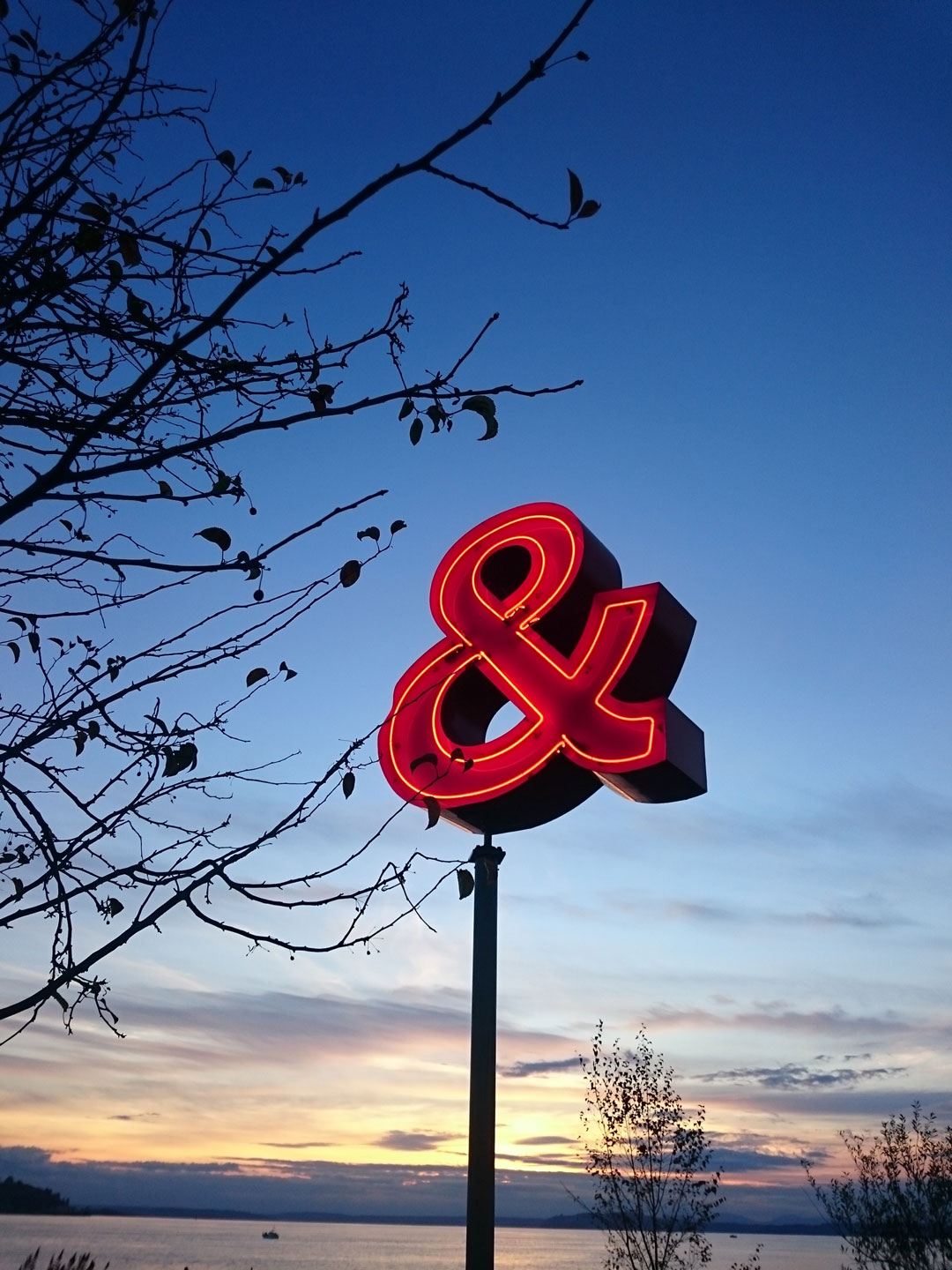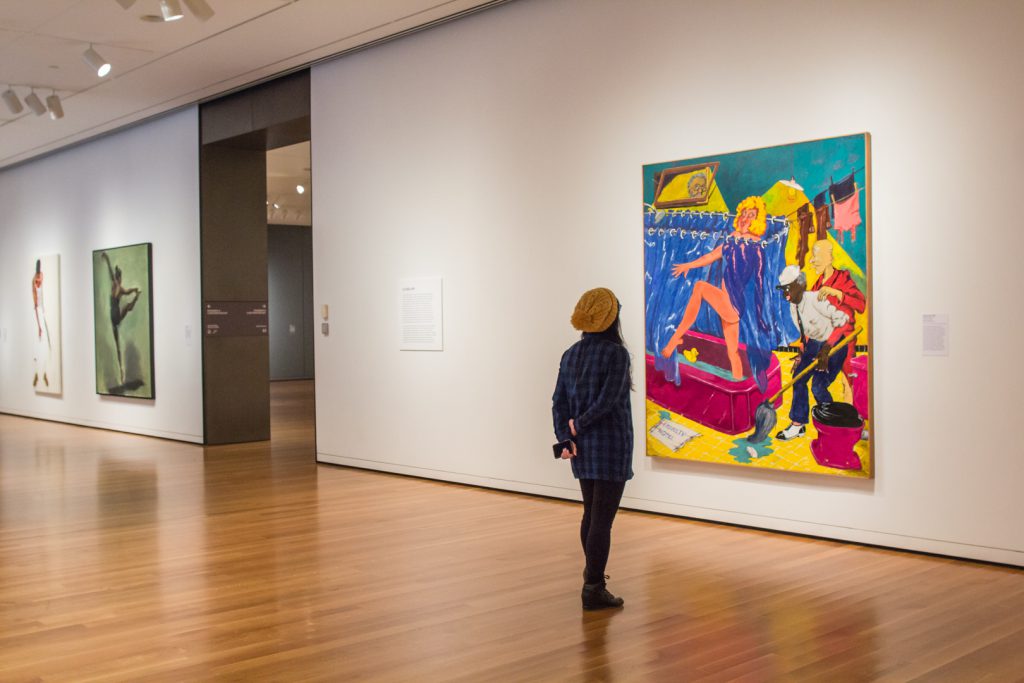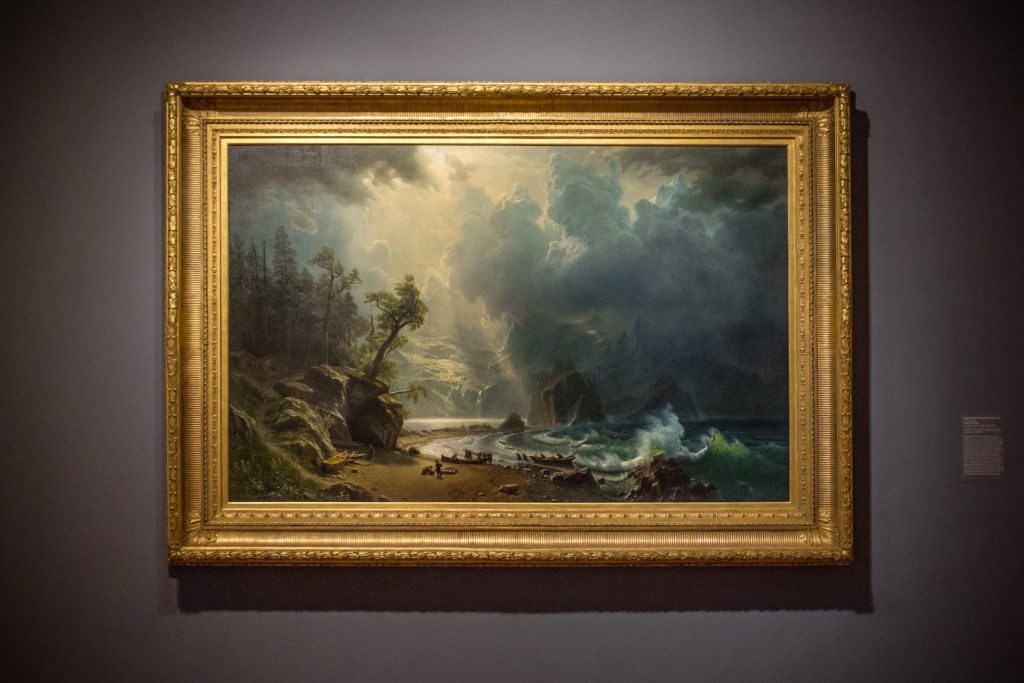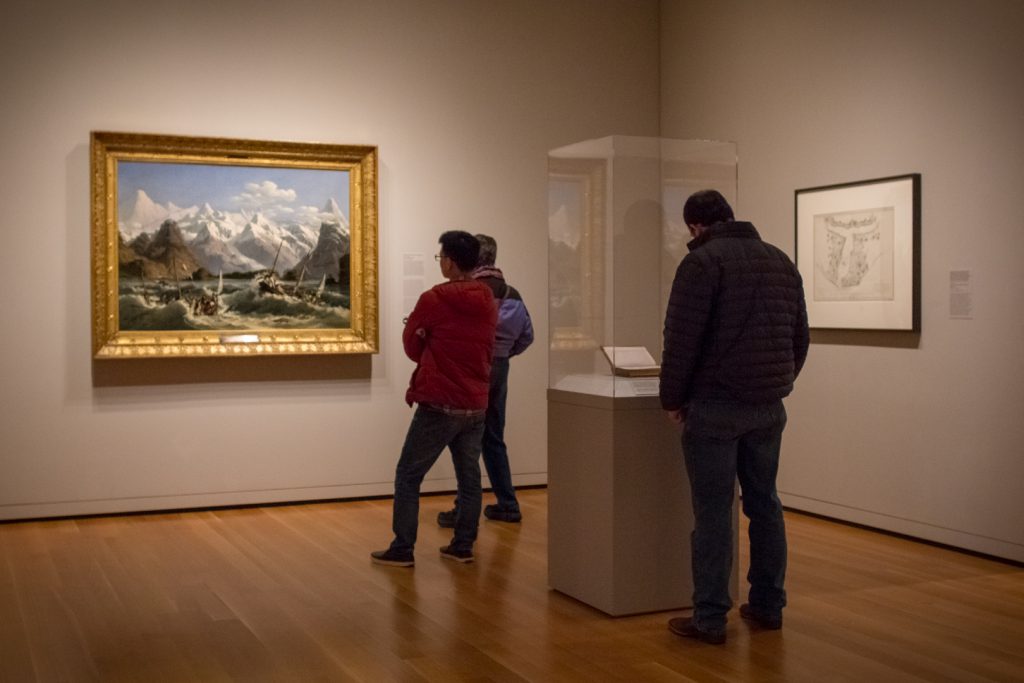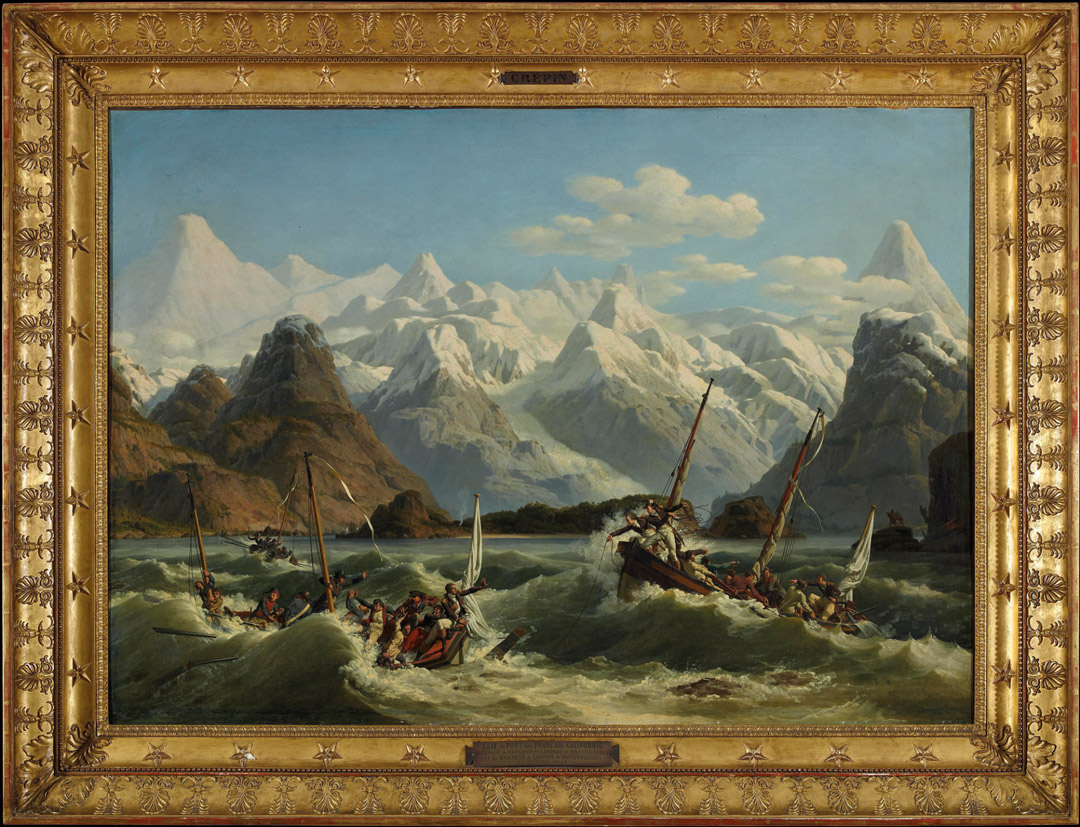Adding a piece to a museum collection is an involved process. In the case of Shipwreck Off the Coast of Alaska, a painting by Louis-Philippe Crépin, the first interaction was on a trip to London when Chiyo Ishikawa, SAM’s Susan Brotman Deputy Director for Art and Curator of European and Sculpture got an email from Christie’s auction house in London about a private sale of a uniquely important painting.
Museum curators continually consider art for the museum’s collection. They assess intellectual and historical importance of artworks, ownership, relevance to the larger collection, as well as condition, potential costs for conservation, framing, display, and storage. SAM’s collection includes approximately 25,000 objects, with 36 new artworks acquired so far in 2017.
To acquire a work of art, the curator has to first convince the director and then the Committee on Collections (COC), an advisory group of board members and community arts leaders, who, in turn, make recommendations to the Executive Committee of the Board, which has the final vote.
To give you a peek into the acquisition process, below is the curatorial argument for this newly acquired painting by Louis-Philippe Crépin.
This painting represents a shipwreck of two launches from the famous French Enlightenment-era expedition led by Count Jean-François de La Pérouse, which reached Alaska in July 1786. The ships were getting ready to leave Lituya Bay when two boats were caught up in violent tidal currents and one boat capsized. The second vessel may have tried to rescue the sailors but itself went under. This painting was commissioned by the family of two brother officers who were killed in this event, and it was enthusiastically reviewed when it was displayed at the 1806 Salon. It has been in the family since that time.
La Pérouse’s expedition into the Pacific Northwest followed celebrated efforts by Spanish and British explorers in the previous decade. Scientific inquiry was a primary motivation, but the explorers were also seeking political advantage for their governments. On July 2, 1786 the expedition arrived at a previously uncharted bay on the Alaskan coast. La Pérouse named it Port des Français, but we know it today as Lituya Bay. After successfully navigating the rocky entrance to the bay, the crews set up camp, planning to stay for a month to explore the bay and glaciers on the mainland at the northeast end of the bay. They concluded their investigations sooner than planned and made ready to leave on July 13. Two boats were sent ahead to sound the channel near the perilous entrance to the bay so that they could chart the depth; one officer miscalculated the distance from the rocks and found his boat engulfed by a sudden high tide. Both boats capsized, and twenty-one men were lost in ten minutes.
The painting closely follows La Pérouse’s own narrative of the disaster and draws on images by the professional artists who illustrated the Atlas du voyage de La Pérouse. The two endangered boats teeter in the foreground amid boulders and high waves as a third tries vainly to reach them. The two mother ships emerge from behind Observatory Island (after the tragedy, La Pérouse redubbed this Cenotaph Island). The urgent efforts of the sailors caught up in the roiling waves are set against the majestic backdrop of the Fairweather mountain range. At the right, gesturing from a rock, are two members of the Tlingit tribe, witnesses to the event, who searched in vain for survivors, according to La Pérouse. The interaction with the French and the story of the shipwreck would remain part of the Tlingit oral tradition.
Crépin captures the men’s desperate actions as conditions suddenly changed. The two La Borde brothers, in the boat at right, offer a line to their doomed comrades just before they too are swept under. The terrible drama is all in the foreground, at eye level. Beyond the turbulent waves in the pass the bay is calm, the mountains of the Fairweather range are impassively still, and the sky is clear and blue.
Born in Paris, Louis-Philippe Crépin was a specialist in marine painting who had trained under celebrated artists Claude-Joseph Vernet and Hubert Robert. His interest in marine subjects kindled by Vernet, Crépin made his debut at the Salon of 1796 with a painting of the port of Brest. His primary patron throughout his long career would be the Naval Ministry of the government. Many of his works are in the National Maritime Museum in Paris, while others are in provincial museums throughout France. This work would likely be the first painting by Crépin in an American museum.
This painting transcends the standard conventions of marine painting. It stands alone within the artist’s oeuvre, achieving a peak of clarity, drama, and pathos that are typical of more highly valued history painting. The prestige of the La Pérouse expedition, the spectacular American landscape, and the portraits of the Laborde brothers make this one of Crépin’s most outstanding works. In his review of the 1806 Salon, Pierre-Jean-Baptiste Chaussard singled out the painting: “But the most beautiful painting by M. Crépin, and the one which most attracted the attention of art lovers and artists, was the Shipwreck of the Dinghies of M. de la Peyrouse. It is in this tragic event that he has deployed all his genius and all the resources of his art. The scene is represented with a touching simplicity, and yet with an energy which inspires at once terror and pity. There are no superfluous figures or accessories: all dramatic interest is in the truth of the action. . . . In sum, this painting promises that he is the rightful successor to Vernet, and that no other country has produced a rival to match this celebrated man.”
In addition to the painting’s superb quality, it has never been on the market, remaining in the family that commissioned it for over 200 years. This undoubtedly has contributed to its excellent state of preservation. The Empire frame, an impressive part of its visual impact, is from the same period as the painting.
Like the curators of the Salon, Ishikawa saw something exceptional in this work that lent itself to SAM’s focus. “It offers an insight into the European perspective of the Northwest as an uncharted area that hadn’t been recorded—the wonder and exoticism. Count Jean-François de La Pérouse who led the expedition to Lituya Bay, which at the time he named the Bay of the French, though it was clear by the trading skills of the Tlingit that this expedition was not the first to find this bay.” Ishikawa continues to point out that, “Crépin is not a famous artist but this is a painting that transcends its genre. It’s an impressive and successful example of human drama.” See this painting installed in Extreme Nature: Two Landscape Paintings from the Age of Enlightenment, opening December 23. Accompanied by the return of Volaire’s much admired Eruption of Mount Vesuvius with Ponte della Maddalena in the Distance, painted around the same time as the Crépin and last seen hanging at SAM this spring in Seeing Nature: Landscape Masterworks from the Paul G. Allen Family Collection, this installation will instill a very human awe and fear in the face of nature’s power.
Image: Shipwreck Off the Coast of Alaska, 1806, Louis-Philippe Crepin, French, 1772-1851, oil on canvas, 40 15/16 × 58 11/16 in., Seattle Art Museum, European Art Acquisition Fund; Bill and Melinda Gates Foundation Art Acquisition Fund; by exchange Gift of Mrs. Lew V. Day in memory of her husband; Gift of Arthur F. Ederer; H. Neil Meitzler, Issaquah, Washington; Col. Philip L. Thurber Memorial; Gift of Mrs. Donald E. Frederick; The late Mr. Arrigo M. Young and Mrs. Young in memory of their son, Lieut. (j.g.) Lawrence H. Young; Phillips Morrison Memorial; Gift of Mrs. Oswald Brown, in memory of her parents Simeon and Fannie B. Leland; Gift of Miss Grace G. Denny in memory of her sister Miss Coral M. Denny; Gift of friends in memory of Frank Molitor; Purchased from funds contributed in memory of Henry H. Judson; Purchased from the bequest of Charles M. Clark; Gift of Mrs. John C. Atwood, Jr.; Norman and Amelia Davis Collection; Norman Davis Collection; Mrs. Cebert Baillargeon, in memory of her husband, 2017.15.
